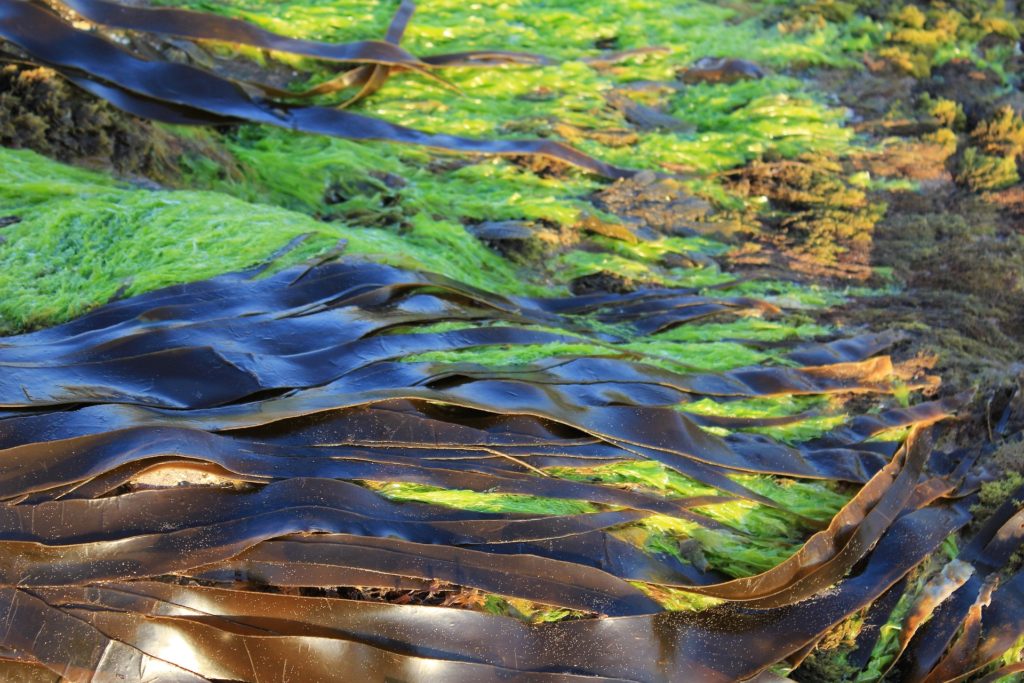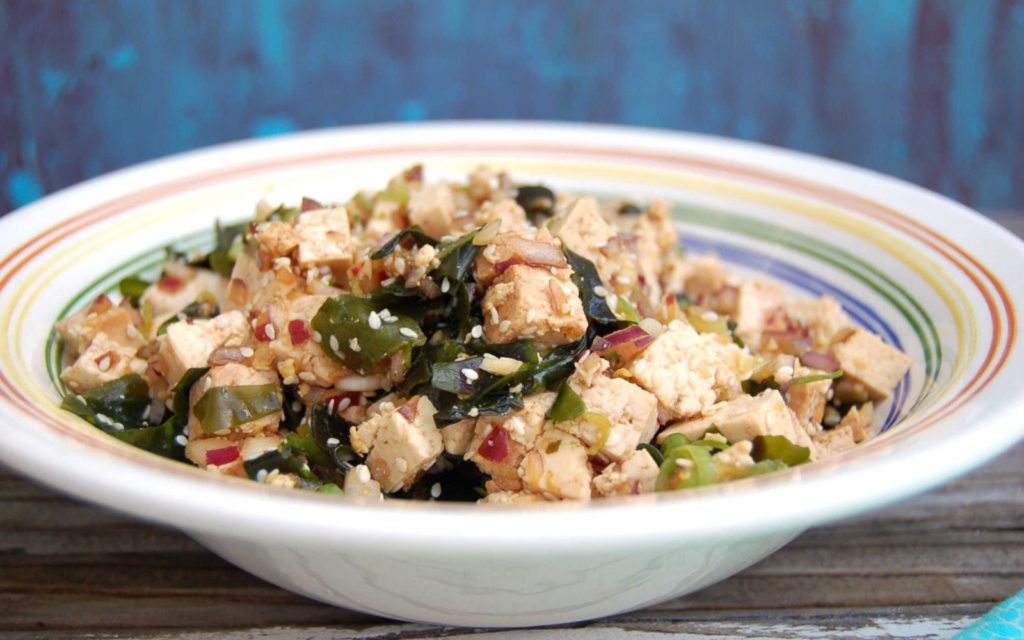
When it comes to iodine, it’s all about thyroid health!
The thyroid plays a huge role in our overall health and iodine is an essential nutrient to keep it functioning appropriately.Advertisement
While iodine is important, many people are oftentimes deficient even though it’s found in a variety of plant-based foods. How does it get there? Like everything else, what ends up in our plant-based foods comes from the Earth’s soil, transferring into the final product! With that said, iodine is also found in saltwater foods, making it a unique mineral to source from one’s diet.
So, where do you start to make sure you’re getting the right dose of iodine?
First off, let’s take a look at the thyroid, at what iodine is, why it’s important, and then we’ll deep dive into getting a smidgen more in your diet through natural and supplemental routes!
Thyroid Gland 101
Let’s start at the beginning. What is the thyroid?Advertisement
First off, it’s a gland. Secondly, you’ll hear it referred to as “butterfly-shaped” due to the fact that it “consists of two lobes located [at] either side of the windpipe (trachea).” This butterfly-shaped gland is “located at the front of the neck just below the Adam’s apple (larynx).”
Alright, so what does it do? The thyroid gland is a major producer of hormones! Specifically, it produces “hormones that regulate the body’s metabolic rate-controlling heart, muscle, and digestive function, brain development, and bone maintenance.”
What is a major component of a healthy functioning thyroid gland? Iodine! The cells that produce “thyroid hormones are very specialized in extracting and absorbing iodine from the blood and incorporate it into the thyroid hormones.”
What is Iodine?
First things first! Iodine and iodide are the same things.
Iodine is a mineral found in the “earth’s soil and ocean waters.” Like all minerals, our body needs certain amounts to make everything function appropriately. When it comes to iodine, you need this mineral to make thyroid hormones. Iodine is the backbone for healthy thyroid function and is even used to manage overactive thyroid gland and thyroid cancer.
Along with thyroid health, iodine also reduces the risk of goiters, is essential for neurodevelopment during pregnancy, improves cognition, treats infections, and is even used to disinfect water and protect the thyroid from radiation.
Iodine is found in “salt water and plant-based foods … [but] this mineral is most-widely available in iodized salt.”
5 Natural Sources of Iodine

Seaweed and Tofu Poke/One Green Planet
Whenever it comes to adding a nutrient to your diet, it’s always a good idea to start with natural sources first such as plant-based foods. By going the diet route instead of supplements, you’re more likely to not overdo the iodine intake. On top of that, many iodine-rich foods are also rich in many other nutrients that your body needs.
With that said, always check in with your doctor, nutritionist, dietitian, or another health professional before changing your diet!
1. Seaweed
If you’re looking to get a bit of extra iodine in your diet, then you’ll want to stock up on some seaweed! Seaweed is one of the best plant-based sources of iodine. Of course, there are many varieties of seaweed, and they’re not all created equal in the iodine department.
With that said, stick with kombu, nori, or wakame.
Kombu is super loaded with iodine offering around “2,984 mcg of iodine per seaweed sheet (1 gram) … [which equals] 2,000 [percent] of the recommended daily intake.” Nori offers around “16 [to] 43 mcg per gram, or about 11–29 [percent] of the daily value.” Lastly, wakame seaweed offers about an average of 66 mcg of iodine per gram, “or 44 [percent] of the daily recommended intake.”
If you’re new to seaweed in your kitchen here are a few super easy recipes to start out with! Seaweed and Tofu Poke, Seaweed Burgers, Easy Seaweed Salad, Seaweed Salad With Toasted Sesame Dressing, or this Cucumber Seaweed Salad.
2. Iodized Salt
Not familiar with iodized salt? Maybe you’re a bit skeptical as well.
First off, what is iodized salt? This is a type of “table salt made by spraying regular salt with a tiny amount of potassium iodate.” In fact, even though iodized salt was created in the early 1920s, the “majority of table salt used in modern times” is this extra type of salt. Why? Turns out medical and food scientists were on to the health benefits of iodine even in the early 1920s and sold iodized salt to help “decrease the occurrence of goiters, or swelling of the thyroid gland.”
Of course, if you’re going the iodized salt route, keep in mind that it’s still got sodium and too much sodium has been linked to high blood pressure!
Iodized salt is incredibly easy to find at your local grocery store. Of course, make it easy on yourself by having it delivered like this Morton Salt, this Hain Pure Foods Iodized Sea Salt, or this Gefen Iodized Salt.
3. Prunes
Prunes are not only incredibly effective natural laxatives — or simply a great food to keep you regular — but they’re also a decent source of iodine.
These dried plums are loaded with “fiber and sorbitol, a type of sugar alcohol,” which is what makes them great for relieving constipation. They also contain nutrients such as “vitamin K, vitamin A, potassium, and iron.”
When it comes to iodine, around “five dried prunes provide 13 mcg of iodine or about 9 [percent] of the daily value.”
If popping prunes is a bit too much for you, try incorporating them into some of your favorite vegan desserts, such as this Prune Marzipan Tart, Baked Tofu with Ginger Miso California Prune Sauce, Sweet Plum and Apple Cinnamon Pizza Pie, or this Almond and Prune Finger Cake.
4. Lima Beans
Beans are a staple of a vegan diet, but if you’re looking to boost iodine intake you’ll want to zero in on lima beans. Around one cup of cooked lima beans contain “16 mcg of iodine, or 10 [percent] of the daily value .” Along with iodine, lima beans offer “fiber, magnesium, and folate,” all of which is a great boon for a healthy heart.
Plus, you don’t have to be a brilliant chef to make lima beans work in the kitchen! Try a few of these super easy and tasty lima bean-based recipes Mediterranean Baked Lima Beans, Garlic and Onion Cashew Cheese and Lima Bean Toast, Baby Lima Beans and Oats Dosa, or this Succotash.
5. Watercress
You may not think twice about watercress, but it happens to be “one of the oldest leafy vegetables that have been taken by … humans since historical times.” Watercress is an excellent plant-based source of iodine! On top of that, you’ll get a healthy dose of “vitamin C, beta-carotene, B vitamins, calcium, vitamin K, potassium, and magnesium.”
If you’re new to watercress, try a few of these watercress recipes: Smoky Chickpea and Watercress Salad, Watercress Soup, 15-Minute Zucchini, Pea, and Watercress Minestrone,
5 Vegan Iodine Supplements
If you’ve spoken with a health care professional about your iodine intake and got the thumbs up to try a supplement, then there are a handful of vegan options to choose from. You’ll want to find an iodine supplement that’s based on kelp or other natural plant-based products. It’s always a good idea to also look for supplements that are non-GMO and free of artificial ingredients as well.
Article Credit: onegreenplanet
